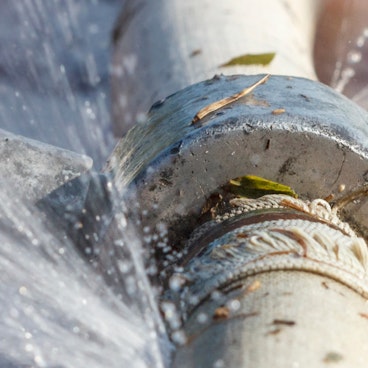The hidden cost of the dry weather
26th September 2022

It’s no secret that the prolonged spell of hot weather with little to no rainfall has already had an impact on subsidence claims with some insurers recording over a 200% increase in claims during June and July. To understand more about the full implication of the dry weather on insurance claims we sat down with Jim Beaumont, Technical Director of Underground Services at Claims Consortium Group to understand what is really going on below ground…
Jim, working as you do across all underground drainage and water services, what are you expecting the impact of this current weather could be?
It is well documented that during a prolonged dry spell, if tree roots cannot find adequate water, they will go looking for it. This means they are naturally drawn to drains and can grow in through joints and cracks in the pipework. In fact, the conditions inside a drain are ideal for roots to flourish, often restricting flow and causing blockages. This however is not the main area that insurers should be concerned about as we are seeing an increase in claims for water supply pipes.
What is the main risk to water pipes?
As the ground dries out, it shrinks, and this movement puts pressure on the pipework in the ground. This is a major concern in areas with increased amounts of clay in the soil. Older water pipes are made from materials that are more rigid, such as metal and alkathene plastic, and so any movement can put pressure on weak spots and joints.
Additionally, when we then see rain return as it has recently, the ground will swell and move again so its double the movement and double the risk of damage occurring.
And have you seen any impact on claim volumes so far?
Often the summer can be a quieter spell for us but this year we are seeing an increase in water supply pipe related claims. This is because more and more properties are on water meters and therefore customers are spotting the spike in usage from the leak much quicker than previously. A lot of the claims we receive are from customers noticing an increase in their bills and when they speak to the water companies, they will generally direct them to approach their insurance company.
And what are some of the other signs that there may be a leaking water supply pipe?
Loss in pressure is a good one, although during dry seasons the water companies do sometimes reduce the pressure anyway because their priority is the provision of sanitation i.e. the supply of clean water for drinking, and therefore when the reservoir levels are low, we see hose pipe restrictions introduced.
More visible signs to look out for include seemingly random green, lush spots of grass in a lawn or garden that is otherwise quite dehydrated and brown. You are looking for an isolated spot though rather than a section as often whole sections will remain greener depending on how much sun they get throughout the day.
Any section of your garden that is consistently extremely damp even with no rainfall is worth keeping an eye on.
It is also worth noting that if a leak is close to a property, it can soften the ground resulting in movement to the building and cracks to appear. That is why every claim that comes to Claims Consortium Group is processed through a bespoke triage method which helps ensure it is managed by the correct Group service for the most efficient resolution.
The issue around water supply pipes will clearly be a recurring one – what can the industry do to mitigate this risk?
It really links into building back better – all areas of the industry need to look at more sustainable materials and building methods that can cope with the inevitable impact of climate change – the changing temperatures and more extreme weather conditions.
The introduction of newer materials is helping as they have the flexibility and can cope with ground movement. Water companies are installing more water meters which make it easier to identify leaks allowing them to be resolved sooner.
However, with older water supply pipes, when work is undertaken as a result of a leak, it is standard practice to excavate and repair just the leaking section by replacing with a short section of new pipe. The issue with this is that water pipes are under constant pressure so once repaired it is only a matter of time before another leak at the next weakest point.
A pragmatic approach would be to replace the length in full with a more resilient material. As we are already excavating to repair the leak this doesn’t actually add significant time or labour costs to the job. It would reduce the future risk of leakage dramatically and is a much more cost-effective option long term.
However, an approach like this would need to be a fully collaborative initiative across the entire industry to fully benefit insurers and their customers alike.










